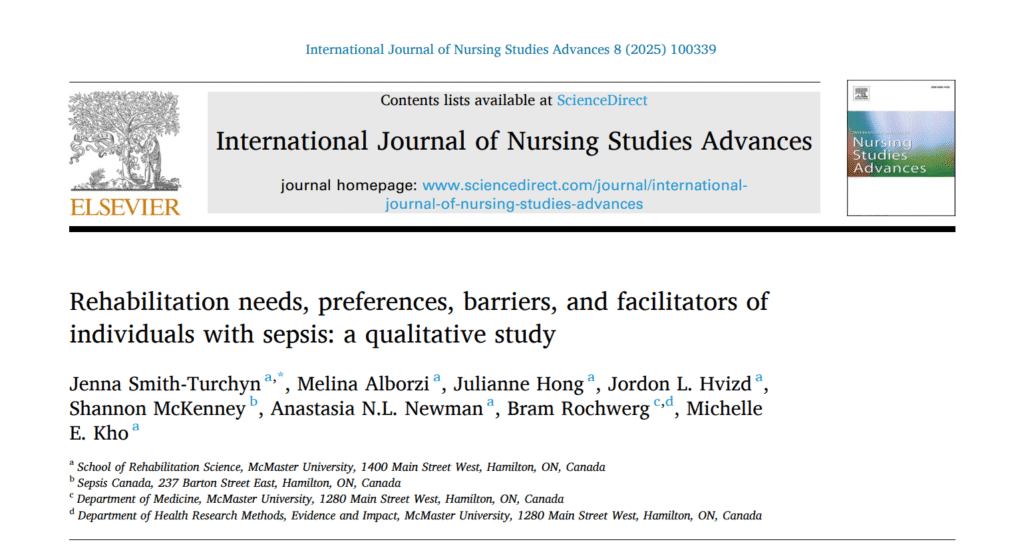
Never in my wildest dreams did I ever think I would be published in science journals. I had hoped to have music published, and I do, but this is a major accomplishment in my life!
Part of the Sepsis Canada LiFTING Training Program is the Annual Award Competition. Jenna Smith-Turchyn won $25,000 to author, Rehabilitation needs, preferences, barriers, and facilitators of individuals with sepsis: a qualitative study. I was privileged to be asked by Jenna to be a part of this important work.
Sepsis Research
Never before has the patient perspective been more important. What does a civilian like me have to contribute to the advancement of science? I have lived experience; in fact, it’s my PhD. Through survivor input, the medical community gets to learn what the disease experience and recovery looks like. It’s kind of like getting a backstage pass to a concert.

Prior to involving patients’ input, it was like Congratulations, you survived. The problem was that for sepsis survivors, being released from the hospital is when the journey begins. I’ve mentioned before that my recovery from 3 infections has been ongoing since 2011. I am hopeful that this is the year I finally return to meaningful work to contribute to my household and community.
What Else is Happening
Further to having my first journal published, I have been active in many other projects.
The next research paper awaiting publication is a study by Julie Reid; Early rehabilitation strategies in critically ill patients with COVID-19: a systematic review. I loved working on this paper because I was involved from start to finish. I assisted with screening titles, abstracts, and data extraction. I don’t have a scholarly background, but Julie spent time teaching me. I’m actually good at data extraction. Who knew I had an analytical brain?
There are 3 more research projects awaiting funding. So to stay productive and continue my learning, I’m also involved with the James Lind Alliance Priority Setting Partnership, the National Sepsis Action Plan, CCCTG Indigenous Circle and I’ve just become involved with Can-Solve CKD Network IPERC (Indigenous Peoples’ Engagement and Research Council).
Chronic Kidney Disease
Having just passed Mother’s Day I wanted to share that I have 3 Mothers, all of different ethnicities, who have experience with Chronic Kidney Disease (CKD). My biological mother and mother-in-law both had kidneys removed in their 20s. My bio-mom has received a living kidney transplant from her nephew and my mother-in-law just received a ureter stent.
This is my biological mother, Monica’s, story as part of the Meno Ya Win – Indigenous Kidney Health Series.
I just learned that the kidneys are the #1 organ to be affected by sepsis.
Between one third and one half of acute kidney injury cases are believed to be caused by sepsis.
So far, I have not experienced any lasting kidney dysfunction. My 3rd infection presented as kidney stones, but the source was the flu. Sepsis affects the kidneys by reducing blood flow and causing inflammation that releases chemicals to damage the kidneys. This can lead to acute kidney injury (AKI).
The Indigenous Connection
I am Métis. 1st of all Indigenous Peoples (First Nation, Inuit and Métis) are 1.6 times more likely to die from sepsis than other ethnicities.
Then you factor in that 1 in 3 Indigenous People have CKD!
These stats motivate me to learn more about why sepsis and kidney disease disproportionately affect Indigenous Peoples. I want to be part of the research that addresses this issue and hopefully be part of the solution.
Research is the Change Maker
- If you are a loved one suffer from CKD, I urge you to get involved with KidneyLink.
- Donate to kidney research.
- Donate to sepsis research.
